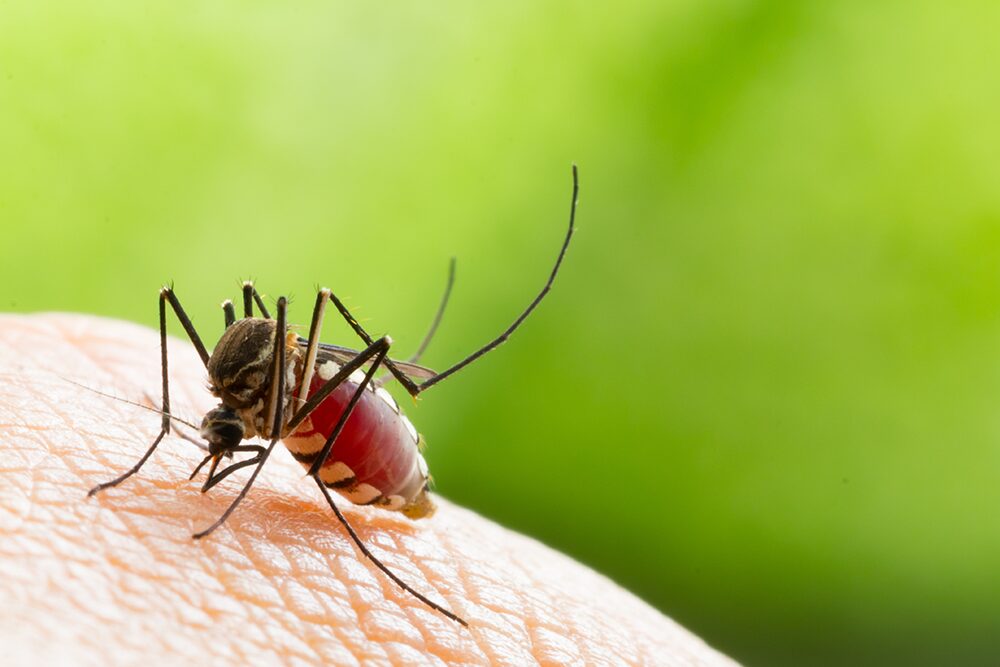Updated WHO guidance for controlling vector-borne diseases through indoor residual spraying.

An estimated 80% of the world’s population is at risk of one or more vector-borne diseases. Mosquitoes, flies, bugs, and other vectors transmit viruses, parasites and bacteria that infect millions of people globally. They cause deadly and debilitating diseases such as malaria, dengue, Chikungunya, yellow fever, Zika virus disease, leishmaniases and Chagas disease.
Vector-borne diseases thrive in conditions of poverty, and mortality rates are often disproportionately high in poorer populations. Those who survive can be left permanently disabled or disfigured, compounding their disadvantage. Taken together, these diseases take an immense toll on economies and restrict both rural and urban development.
To prevent malaria, WHO recommends 2 vector control interventions for large-scale use: insecticide-treated nets and indoor residual spraying (or IRS). For IRS, insecticides are sprayed inside houses and other buildings where disease-transmitting insects are likely to rest. IRS has been widely used to kill malaria-carrying Anopheles mosquitoes, but it can also kill insects that transmit other diseases.
“Earlier WHO guidance was limited to IRS against Anopheles mosquitoes for the prevention and control of malaria,” notes said Dr Jan Kolaczinski, Unit Head of the Vector Control and Insecticide Resistance unit in the WHO Global Malaria Programme. “Recognizing that IRS can potentially impact multiple diseases, and with a view of supporting disease control integration, the scope of this updated guidance has been expanded beyond malaria to include other vector-borne diseases.”
The updated guidance is in line with the Global vector control response 2017‒2030, a WHO strategy aimed at strengthening vector control worldwide through integrated action across sectors and diseases, among other measures.
As detailed in the new operational manual on indoor residual spraying, successful IRS campaigns require a high level of political commitment with dedicated human, logistical and financial resources. Adequate health system capacity is essential to ensure that the spray application is well timed, of good quality and of sufficiently high coverage. The engagement of community leadership and the acceptance of spray operations by local residents are also key to success.
The manual identifies 5 basic goals for an IRS campaign:
- spray coverage: to protect as many individuals as possible in the target area, with particular emphasis on protecting vulnerable groups;
- spray acceptance: to achieve spraying of a high number of units and structures in the target area;
- spray progress or efficiency: to ensure that enough houses are sprayed each day to keep the campaign on schedule;
- spray quality: to ensure that spray operators use the correct procedures and techniques to deposit the right amount of insecticide on all sprayable surfaces; and
- spray monitoring and evaluation: to monitor spray coverage, acceptance, progress, quality, and, where possible, the efficacy and effectiveness of the campaign, with a view to informing improvements for subsequent campaigns.
Target audiences for the operational manual include vector-borne disease control programme managers and staff as well as implementing or private-sector partners at national, sub-national or local levels who are responsible for the design, planning or implementation of vector control operations.
The new manual is a companion document to the consolidated WHO guidelines for malaria. Substantive content was drawn from materials provided by the United States Agency for International Development/Abt Associates. It draws on content from the Operational manual on leishmaniasis vector control, surveillance, monitoring and evaluation, the PAHO Manual for indoor residual spraying in urban areas for Aedes aegypti control, and other WHO and partner documents.
The updated operational manual will support locally appropriate, high-quality, effective and safe spray operations to reduce the transmission and prevent the spread of vector-borne diseases.

